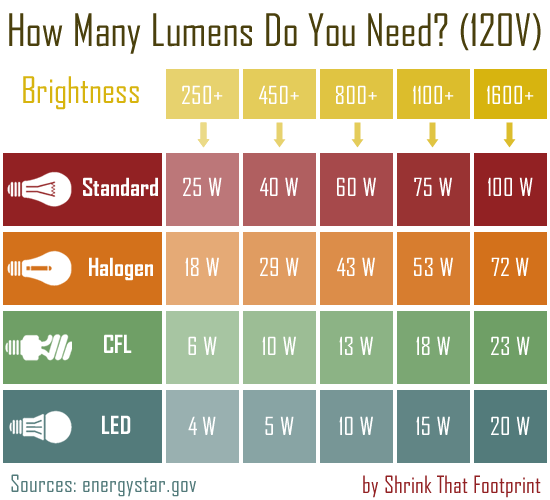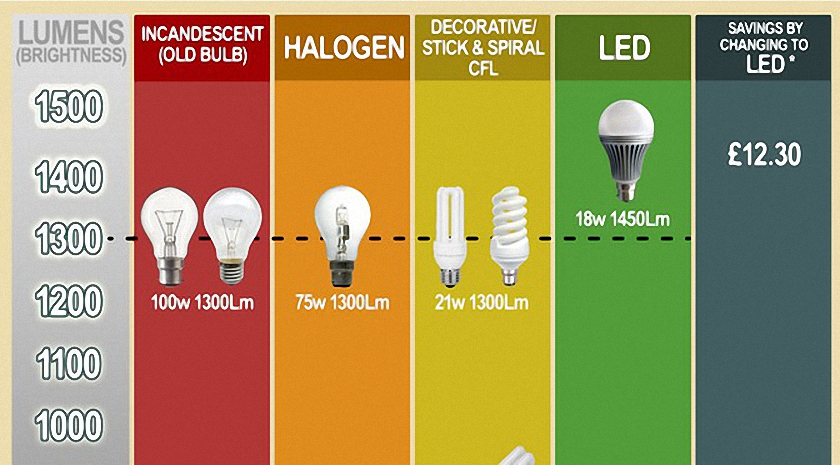Introduction
We are all trying to reduce energy costs and CO2 emissions by choosing modern alternatives to incandescent lamps. Here are some lighting charts to help you select the best lamp for your situation. Since the decline of incandescent lamps there have been many alternatives made available based on fluorescent tubes bent in many ways to condense a long tube into a confined space.
I had my first Philips SL prismatic Compact Fluorescent Lamp (CFL) lamps soon after they came on the general market back in the 1980’s. I only recently sent my last one to recycling after deciding that even my shed could do better than have one of those long time warm-up devices.
Fluorescent Tubes
In the early days of low energy lighting there was nothing better than the good old fluorescent tube, usually confined to kitchens and garages in the British house. I still had two twin fluorescents in my kitchen until 2015. If you want the room lit without shadows that’s the way to do it. After much searching in 2003 I found some streamlined fluorescents fit for the modern era to replace my old fluorescent ‘chunky boxes’. Unfortunately they went off the market and I struggled to find a decent looking replacement that didn’t cost a fortune. There were some problems with the ones I used. They had a self destruct mechanism built-in. The plastic fixings for holding the wires in place on the frame all deteriorated under the ultraviolet light given out by fluorescent tubes. I replaced them with zip ties but they suffered from the same problem.
Lamp Brightness
To get back to the point of this article, which is to advise on the brightness of replacement lamps, I have chosen to publish a chart by espares which seems to relate to the UK/European market and another by ovo energy which relates to the American market and appears to suggest their lamps emit more light than European lamps, e.g. UK/European 100W ≅ 1300 lumens, American 100W ≅ 1600 lumens (see A USA Lighting Chart).
UK Lighting Charts
The chart below, published by espares (a UK company) on 31/10/2014, compares lamps of differing types (incandescent, halogen, CFL, LED) and suggests annual savings that could be made by using LED lights.


When we go to the shop to buy a new lamps now we need to know how many lumens we want from the lamp rather than how many watts it will consume, from the point of view of brightness. However we do need to consider the lowest wattage for the brightness we want, from the efficiency point of view.
I can’t speak for others but I have never been happy to replace a bright light with a dimmer one. I like well-lit rooms because I do practical things and need to see. However I am appreciative of dimmer lighting when just sitting and talking with guests or watching TV.
USA Lighting Charts
For those readers in the USA here is an example of American lighting charts. It’s taken from ‘The Ultimate Beginner’s Guide To Energy Saving Light Bulbs’ by ovo energy :




Leave a Reply